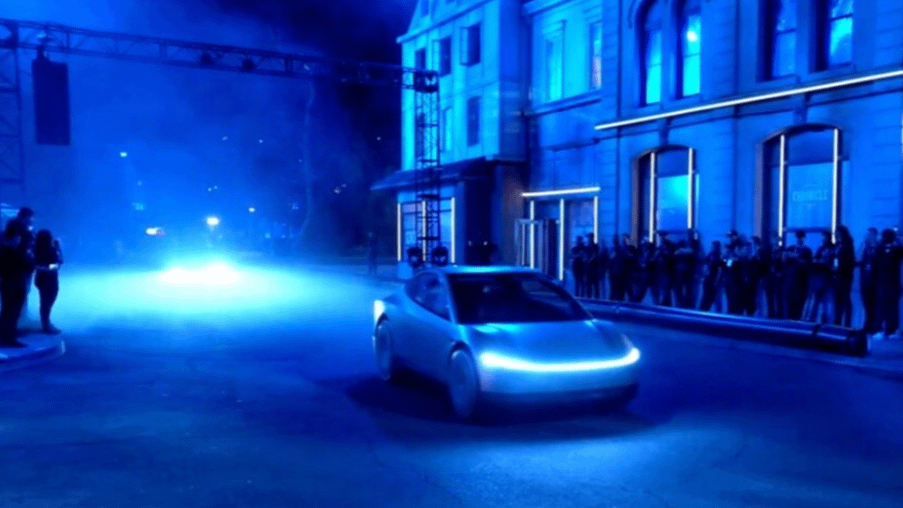Austin, TX – After years of bold promises, Tesla has finally kicked off its robotaxi service in Austin. Select users began riding in driverless Model Y SUVs this past weekend, marking a major milestone for the company and its controversial approach to autonomous driving.
Each ride costs $4.20, a number that feels like a wink from CEO Elon Musk. But behind the low price and buzz lies a rollout that raises as many questions as it answers.
A Quiet, Limited Launch
Tesla didn’t go big with ads or press briefings. Instead, it quietly sent invites to a group of handpicked customers — mostly its most loyal supporters online. Those users gained early access to a new Tesla robotaxi app, which lets them request rides within a small part of South Austin.
- Operating hours: 6 a.m. to midnight
- Fleet size: Roughly 10 Model Y vehicles
- Service area: Limited to South Austin neighborhoods
- Safety: A Tesla employee sits in the front passenger seat as a safety monitor
Though the cars drive themselves, they’re not entirely alone. Each one has a Tesla staff member in the passenger seat — not to take the wheel, but possibly to intervene in case something goes wrong.
Not the Futuristic Cybercab… Yet
Despite teasing a dedicated robotaxi vehicle called the “Cybercab” back in 2024, Tesla’s first rides are happening in standard-looking 2025 Model Ys.
These SUVs run a new version of Tesla’s Full Self-Driving (FSD) software, which the company now calls “unsupervised.” That means it’s designed to handle driving tasks without human input — even though it’s still legally considered a driver assistance system.
And unlike competitors like Waymo, Tesla isn’t using radar or lidar sensors. It’s relying entirely on cameras and artificial intelligence to navigate the streets.
A Glimpse Behind the Curtain
One of the first people to spot Tesla’s robotaxi activity was Ed Niedermeyer, an industry expert and co-host of The Autonocast. He located what appeared to be a robotaxi staging area tucked away near Oltorf Street — just a quiet parking lot with a few Model Ys going in and out.
On launch day, he saw Tesla robotaxis hitting the streets, employee riding shotgun. One of the vehicles reportedly braked sharply in an intersection, possibly reacting to a nearby police car. It’s unclear whether it was an error or a safety precaution.
Still, those small glitches suggest the system is being fine-tuned in real-world conditions — not a fully polished product just yet.
Tesla Keeps the Details Close
One thing’s clear: Tesla is not being as transparent as some of its competitors. The company has denied public records requests from both TechCrunch and Reuters, arguing that the data includes trade secrets and confidential business information.
Most of what we know about the launch has come from social media posts by Tesla fans. That’s a sharp contrast to other robotaxi services like Waymo, which regularly publishes safety info and FAQs for the public.
Tesla did publish a robotaxi info page on its website, but it’s more of a guide for riders than a technical breakdown.
What Riders Can Expect

Tesla has laid out a few clear rules for passengers:
- No smoking, vaping, or alcohol
- No illegal activity or damage to the vehicle
- No public sharing of videos that show rule violations
If riders break the rules — or post content that Tesla doesn’t approve of — their robotaxi access can be revoked.
On the tech side, Tesla says the in-car camera is off during rides unless a rider asks for support or an emergency happens. After a ride ends, the camera briefly turns on to confirm the vehicle is ready for the next trip.
First Impressions: A Mixed Bag
Some early riders said their trips went smoothly. One person shared that Tesla’s remote support team had to step in at some point, though they didn’t say why. Still, they called the overall experience “very smooth.”
It’s too early to say how often remote help will be needed — or what kind of issues the cars might face as the program scales.
Musk Calls It a Major Win
On X (formerly Twitter), Elon Musk and other Tesla leaders celebrated the launch.
“Super congratulations to the @Tesla_AI software & chip design teams on a successful @Robotaxi launch!! Culmination of a decade of hard work,” Musk wrote.
Tesla’s head of self-driving, Ashok Elluswamy, also posted a photo from what appeared to be a small “launch party.”
The Road Ahead
Tesla’s move to start public rides without a safety driver behind the wheel is bold. Most companies work through a series of slow, highly controlled steps. Tesla, in contrast, is jumping ahead — and betting big that its AI-first approach will pay off.
That strategy carries risk. Unlike others in the space, Tesla is skipping over some traditional testing phases and relying heavily on real-time learning from real passengers.
Key Takeaways
Here’s a quick rundown of what’s happening:
- Tesla’s robotaxi service is live in Austin, but limited to a small group and area
- Rides cost a flat $4.20, with no one in the driver’s seat
- Tesla employees ride along as monitors
- Real-world tests show promise — and some odd behavior
- Tesla is being secretive about technical and regulatory details
- Users are encouraged to share their experiences, but only within Tesla’s rules
Final Thoughts
Tesla’s robotaxi rollout in Austin is a big step for the company — and for self-driving technology overall. It’s happening faster than many experts expected, but it’s also surrounded by uncertainty.
The real test isn’t just whether the cars can drive — it’s whether they can do so safely, reliably, and without constant human oversight.
For now, it’s a fascinating experiment to watch unfold. And if you’re in South Austin and lucky enough to get an invite, it might be worth a $4.20 ride just to see what the future feels like.
